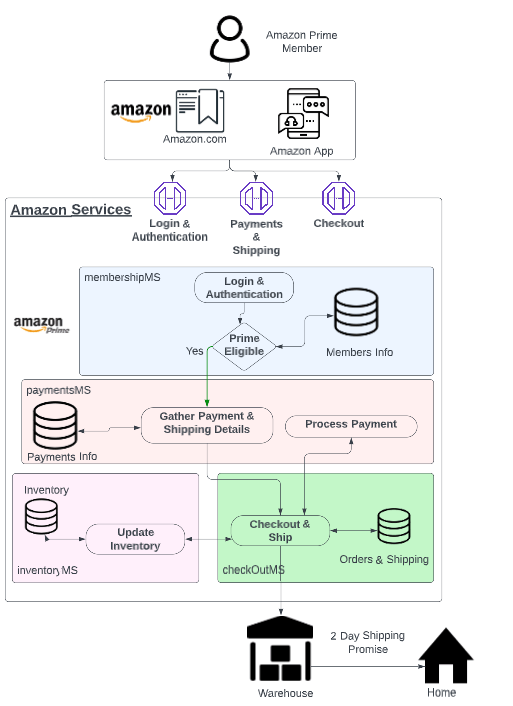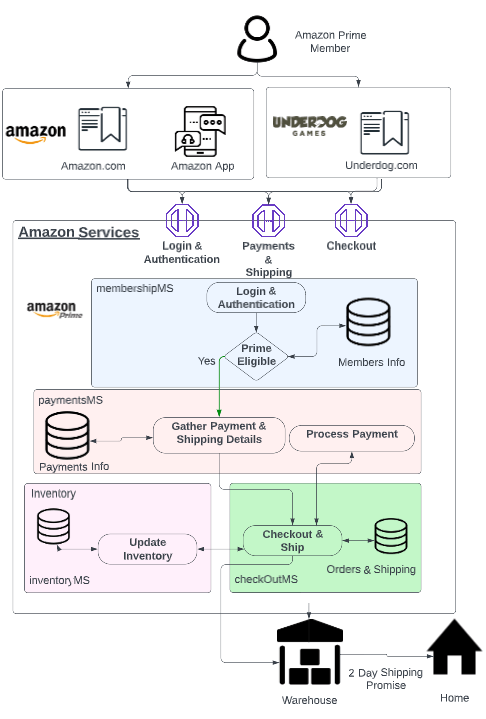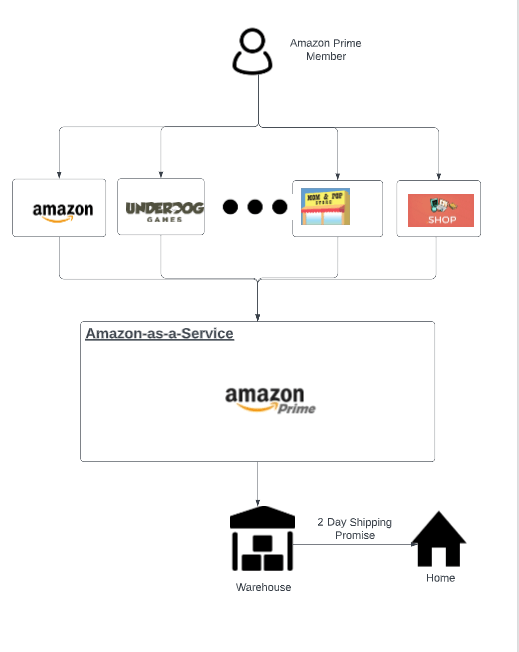Amazon recently announced a "Buy with Prime" option that will allow Amazon's prime members to purchase off Amazon's website in other participating online stores. With more than 200 million members globally, Amazon Prime has been a company staple since its launch in 2005. Amazon has called the new offering a way to extend Prime shopping benefits to areas beyond the company and comes as it has recently raised the price of the service. But, the bigger question that lingered in my mind was, how is Amazon able to offer such services externally? What is the real business strategy plan at play here?
How is Amazon able to offer the "Buy with Prime" option
The ability to offer this service externally did not happen overnight. To understand how Amazon is able to offer a buy with prime through other online participating stores, we will have to go back to 2002. According to tech lore, Jeff Bezos famously wrote the "API Mandate" email to his employees. By legend, the mandate contained the follows:
- All teams will henceforth expose their data and functionality through service interfaces.
- Teams must communicate with each other through these interfaces.
- There will be no other form of interprocess communication allowed. No direct linking, no direct reads of another team’s data store, no shared-memory model, and no back-doors whatsoever. The only communication allowed is via service interface calls over the network.
- It doesn’t matter what technology they use. HTTP, Corba, Pubsub, custom protocols — doesn’t matter.
- All service interfaces, without exception, must be designed from the ground up to be externalizable. That is to say, the team must plan and design to be able to expose the interface to developers in the outside world. No exceptions.
- Anyone who doesn’t do this will be fired.
- Thank you; have a nice day!
This mandate encouraged a lot of Amazon's thinking around AWS and externalized infrastructure.
This mandate also became the backbone of the evolution of service-oriented architecture (SOA) and fine-grained Microservices, the architectural style of leading enterprises today.
What exactly is a Microservice then?
According to microservices.io, Microservices – is an architectural style that structures an application as a collection of services that are
- Highly maintainable and testable
- Loosely coupled
- Independently deployable
- Organized around business capabilities
- Owned by a small team
Amazon originally deployed the microservices-based architecture for the benefits mentioned above.
Below is a concept of how these Microservices could be enabling Prime members to order with Amazon.
The prime member visits Amazon.com or opens the application. As a first step, they are confirmed to be a Prime member. Once they decide to purchase an item, their payment and shipping details come up. He confirms those details and checks out after which the payment is processed, inventory is updated, and the item is shipped with a two-day delivery promise.
Among all the benefits of Microservices, the biggest ones are their ability to be externalizable and to enable omnichannel experience. The same Microservices can be accessed by any format of the front-end user interface, whether it be Amazon.com, Amazon's iPhone App, Android App, OR Other Online Websites and Apps that are interested in participating in this program. Below is a concept of how Amazon enabled the same Microservices architecture to enable Underdog.com to offer the "Buy with Prime" option. Watch Purpose-driven Product by Bruce Haldane.
As a Prime member, the customer visits Underdog.com. He chooses an item to purchase and clicks on “Buy with Prime”. The member logs into Amazon which invokes the membership MS to authenticate the customer and confirm that he is a Prime member. Once confirmed, the member reviews and confirms the payment and shipping details and clicks on checkout. Amazon successfully orders the item and initiates two-day shipping for the chosen item.
In summary, Amazon has modularized this whole offering to enable other participating websites and apps to provide Prime member benefits to Amazon prime members. As long as Amazon can scale its infrastructure and other back-end components (Warehouse space, logistics, etc.), this architecture provides the ability to operate Amazon’s Prime business as a service and is a key ingredient in enabling the “Buy with Prime” option.
Read Understanding the next 100m users in India by Akhil Jayaprakash
What is the strategy at play here?
As mentioned earlier, Amazon has more than 200 million members globally. With the recent increase in price, the "Buy with Prime" option provides increased membership benefits that come with the increased price. However, as a business strategy, this looks to be Amazon's effort to enable "Amazon-as-a-Service".
It has built up a huge tech infrastructure, warehouse capacity, and logistics. This includes Last-mile delivery to provide the best experience to its customers. Customers have expectations when ordering on Amazon. They expect that the shipping should be free, it should be two days, and returns should be free. Those expectations are carried over when buying on a branded website. Now Amazon has a solution for this and that solution is to offer an Amazon-like shipping experience for participating websites.
Amazon can spawn "Buy with Prime" into "Ship with Amazon" which offers the same two-day shipping benefit and also takes on Shopify’s fulfilment network. In "Ship with Amazon", the participating websites and apps can retain their branding and use Amazon's end-to-end capabilities to ship packages and provide the same experience that Amazon’s customers get. What "Ship with Amazon" will also do is start using Amazon's logistics for other companies and will take on the juggernaut of FedEx and UPS. Amazon will become a central model for many services through its built-up infrastructure. This will further reinforce the Amazonian Moat.
In summary, all of this can be traced back to Amazon’s ability to build its tech architecture organized around Microservices. It is now enabling Amazon to offer its whole physical infrastructure as a service. In the next article, I will talk a little more about Microservices and how to organize the Product Management organization based on this principle.










